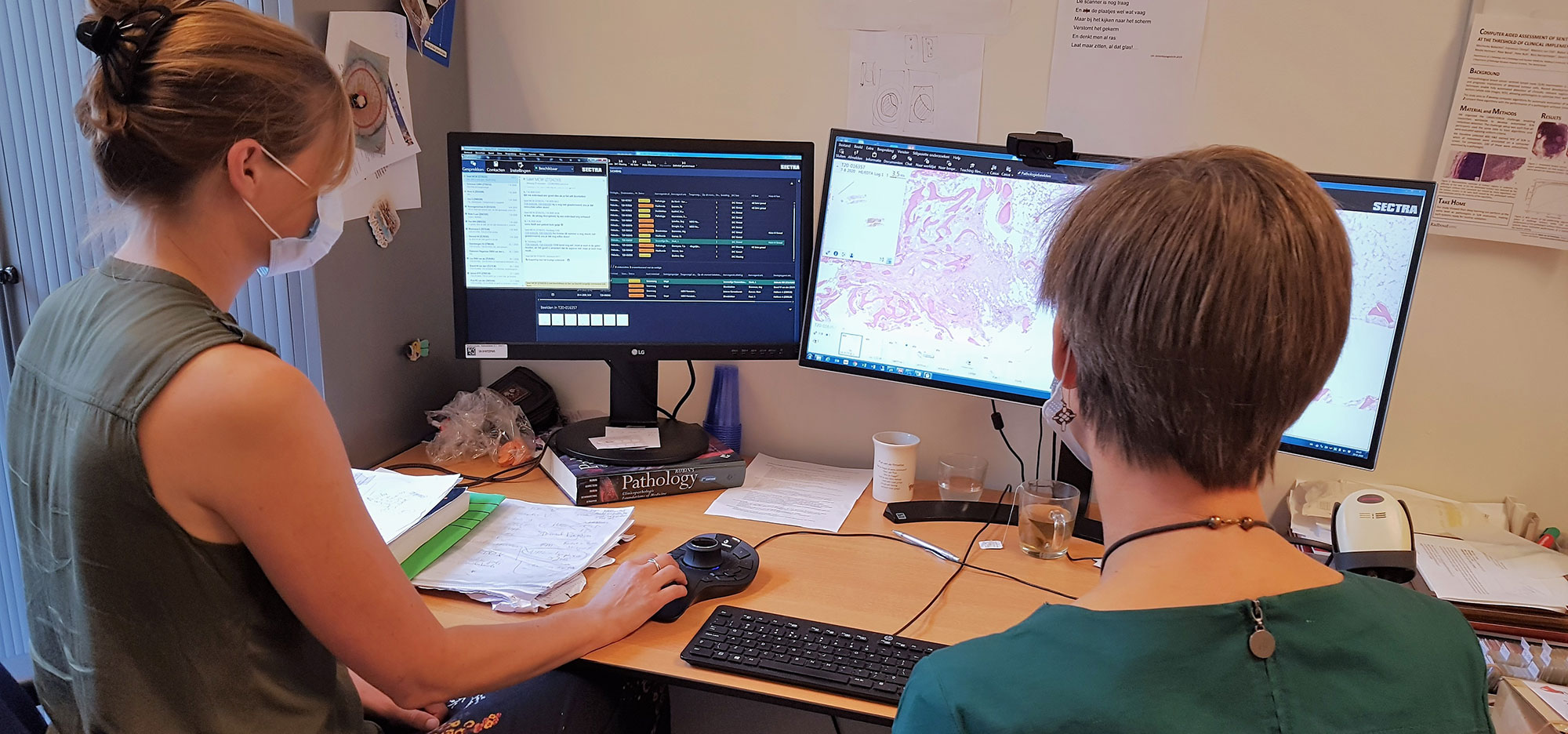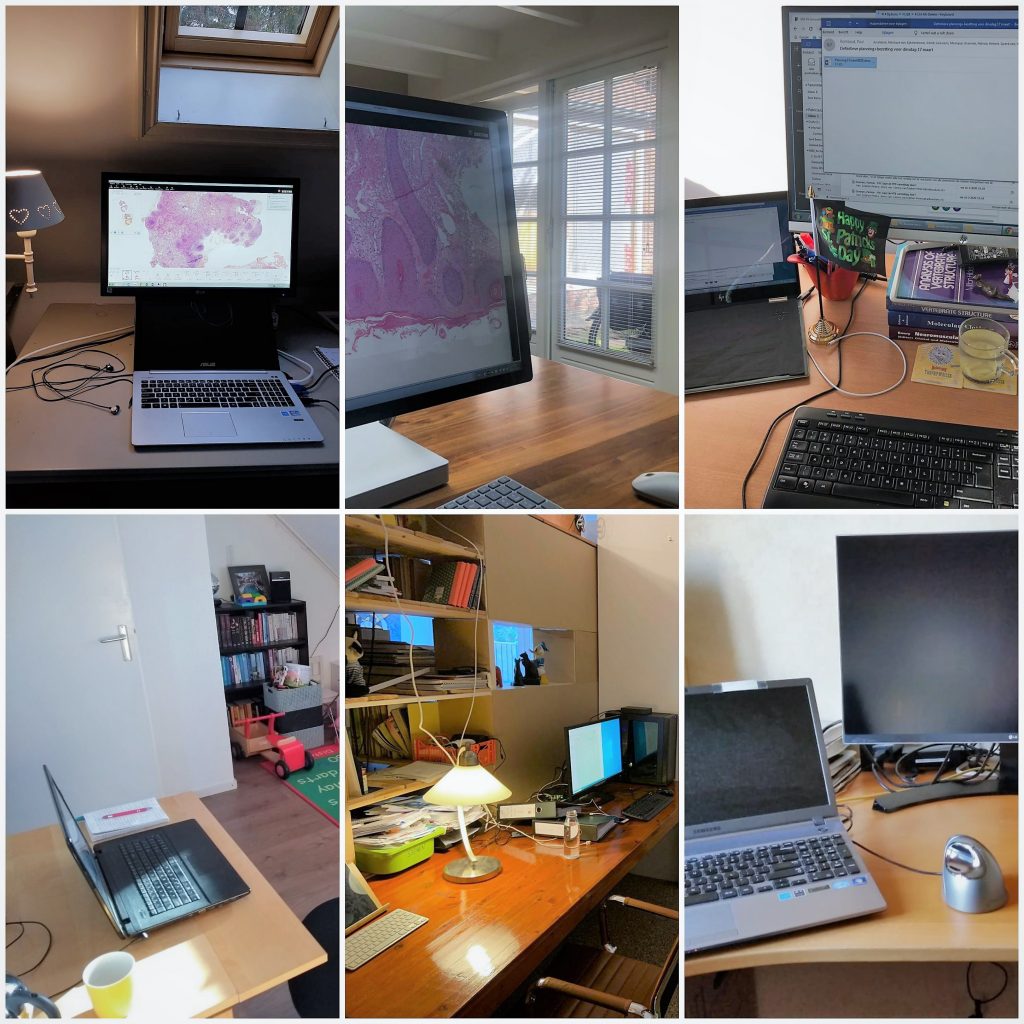Back-to-normal production
“Our home offices are still far from ideal,” says pathologist Konnie Hebeda. “In the hospital, we have a workstation with several large monitors, and we can dictate reports digitally using speech recognition. At home, we only have a laptop with a separate monitor, and we must type everything manually. However, no one has complained as it is so important that we can continue to work, and that the diagnostics process has not come to a halt. As a result, regular patient care can continue, although on a slightly reduced scale.”
On the upside, far fewer exams were being submitted at the beginning of the coronavirus crisis. “The number of exams was significantly lower than usual, particularly in the first few weeks. This gave everyone time to get used to working digitally. And now, production is almost back to normal,” Hebeda says.
Van Overdijk understood from the number of technical and functionality-related questions that their new way of working took some getting used to. “Since the digital review was rolled out so quickly, it didn’t work perfectly for everyone right away. During the first two weeks, we talked to many pathologists who had questions, but we got everything to work in the end.”
Digital sharing of images
Working digitally brought great advantages to the investigations related to COVID-19. “We were able to share images with colleagues very quickly—with other pathologists, but also pulmonologists, radiologists and other medical specialists internally,” Grünberg says. “Our multi-disciplinary team meetings now primarily take place virtually.”
External sharing of images is trickier since you need a secure connection between hospitals, and not all pathology departments are digitized. Even so, in the current situation, hospitals want to be able to exchange knowledge and experiences as soon as possible. “That is why I sometimes take a screenshot,” Grünberg explains. “That way, I can use anonymous images to show others what I have observed. I made a PowerPoint presentation with these images, for everyone in our hospital who was interested. We also shared the screenshots in a national pulmonary pathology network and internationally. There’s no faster way to learn.”
Embracing the digital workplace
Soedira enjoys seeing how not only the pathology department but the entire hospital has embraced working digitally. “Of course, the information management team has been pushing for digitization for some time,” she says. “However, this is a major change to processes and workflows, so it doesn’t happen quickly. COVID-19 has ensured that everyone is now excited about digital working methods. Sometimes things go wrong, but everyone accepts that—it is a natural part of innovation. We solve it, learn from it, and make everything even more efficient and effective. This change in mindset is creating a tailwind for all digitization projects, and certainly also for the accelerated roll-out of digital pathology.”
“The timing was indeed perfect,” Grünberg adds. “There were still some people in our department who had doubts about digital pathology. That is why, just a few months ago, the discussion centered around the speed of transition. We have left that discussion well behind us now. Instead, we are talking about optimization.”
She believes the success of the adoption is also due to thorough preparation. “The pathology and information management departments have worked together very closely over the past year. The digital pathology environment that we put in place fully meets our requirements. Thanks to our preparation and close cooperation, we were able to adapt quickly. I am very proud of what we achieved together with Sectra,” Grünberg concludes.




